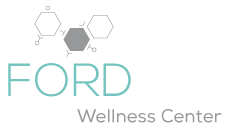Stem Cell Therapy & Platelet Rich Plasma (PRP)
Trying to avoid surgery and completely heal a wound or injury? We have listed some of the primary health and cosmetic issues where PRP therapy has proven beneficial thus far:
- Shoulder: rotator cuff tear or tendinitis, labrum tear, arthritis, instability, rotator cuff impingement syndrome or bursitis, bicipital tendinitis
- Hip: iliotibial band tendinitis (ITB Syndrome), psoas tendinitis and bursitis, labrum tears, arthritis, sacroiliac joint dysfunction, greater trochanteric bursitis,
- Elbow/wrist/hand: tennis elbow, golfer’s elbow, trigger finger, DeQuervaine’s Tenosynovitis, other wrist or finger tendonitis, arthritis
- Ankle: peroneal tendinitis, achilles tendinitis, instability, ankle sprain, other foot or ankle tendinitis
- Knee: partially torn or strained ligaments of the knee (ACL/LCL/MCL), patellar tendinitis, meniscus tears, arthritis, chondromalacia, instability
- Spine: ligament sprain, whiplash injury, rib problems, arthritis, instability
- Face: fine lines and wrinkles around the eyes, cheeks, forehead and mouth, loss of facial volume, poor skin tone and texture
How does platelet rich plasma (PRP) therapy work?
During PRP therapy, the composition of your blood is altered so that it contains high concentrations of platelets, which hold the components (growth factors) responsible for stimulating your body’s natural healing mechanism. When PRP is injected into the treatment site, the growth factors within the platelets catalyze and amplify a number of natural healing responses, such as: stimulating blood flow, reducing inflammation, strengthening the resiliency and firmness of cartilage, promoting the regeneration of bone, and restoring the health of previously damaged tendon and ligament proteins.

